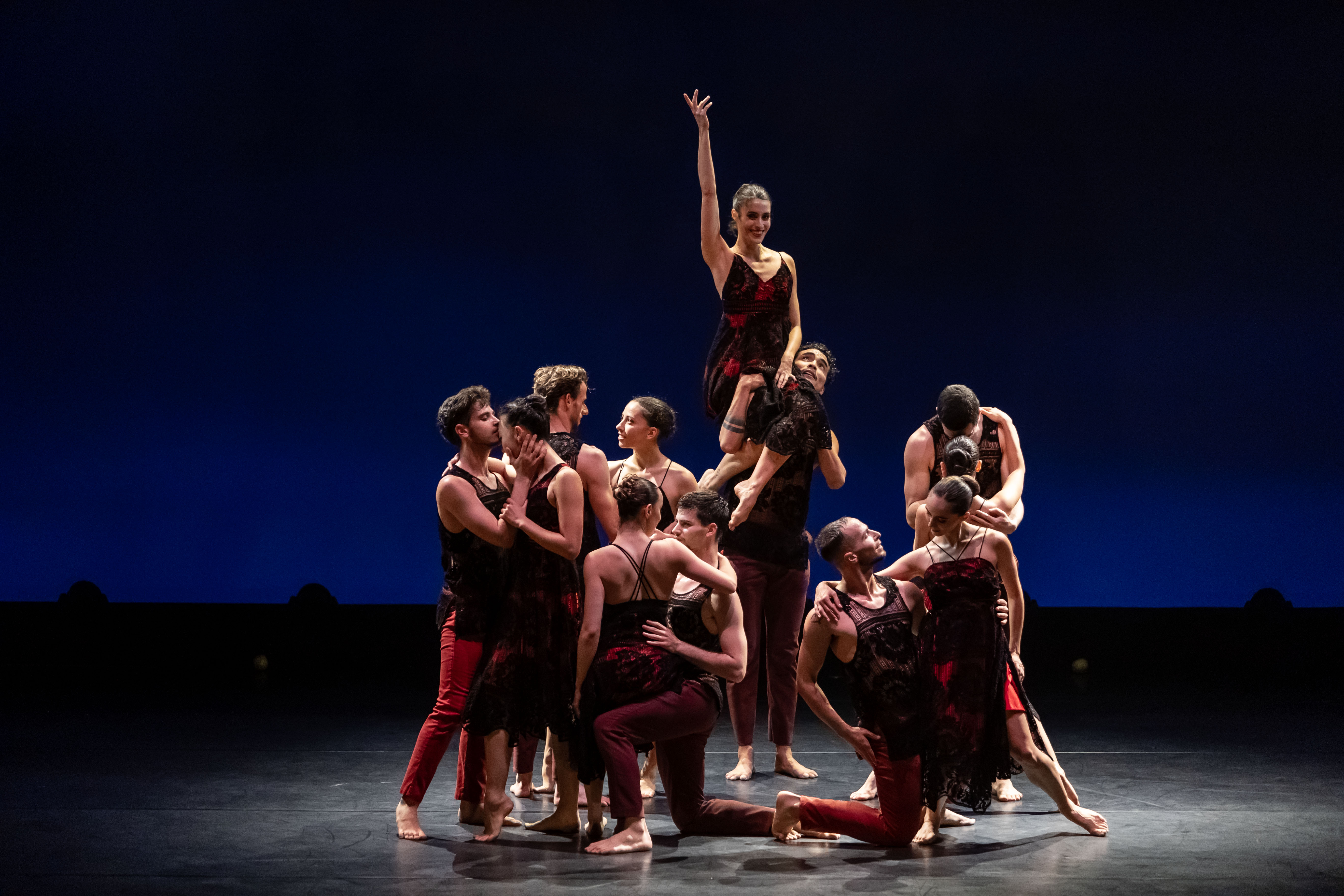Last Night in Dance: Carmina Burana Performed by Kamea Dance Company is a Show Full of Grandeur and Splendor.
Only five performances of the newly revived piece were staged in Herzliya, all of which were sold out—and rightfully so. Tamir Ginz has crafted a dance that is both majestic and dazzling, set to the dramatic classical composition by Carl Orff, featuring powerful compositions and impeccable costumes.
The show begins in silence. A dancer clad in flowing red bursts onto the stage, soon joined by dancers in black with hints of red. For a moment, the audience wonders if there’s an issue with the sound system, but suddenly, the dramatic orchestral sounds of Carl Orff’s piece slice through the stage. Originally, Ginz’s choreography was performed to live orchestral and vocal accompaniment, but in this renewed version, the music is recorded. The performance consists of various segments and formations aligned with the unfolding storyline. All the dancers delivered flawless ballet with challenging capabilities, much to the delight of the audience.
Kamea Dance Company first brought Carmina Burana to the stage in 2007, choreographed by Artistic Director Tamir Ginz at the invitation of the Kypria Festival in Cyprus. Since then, Carmina Burana has become an international success and has been performed worldwide, including at the cultural events of the 2008 Beijing Olympics. Ahead of the revival in spring 2024, at the request of international festivals, Ginz updated the choreography, while Aviad Herman’s spectacular costume design and Shai Yehudai’s new lighting design infuse fresh energy into the work.
In Ginz’s interpretation, a vibrant and contemporary take on Carl Orff’s musical composition, his virtuoso dancers embody the musical progression through raucous courtship games, passion, and eroticism. From this desire-laden ball, a variety of characters emerge, each revealing their unique identity. The piece reaches its climax in a release of freedom, both spiritual and physical love.
Carmina Burana is a dramatic cantata composed by Carl Orff in 1935-36. The cantata is based on 24 poems from a medieval manuscript collection of the same name. The literal translation of the name is “Songs of Beuern,” referring to the Benediktbeuern Abbey, where the original manuscript was discovered. The libretto, written in Latin and German, deals with a wide range of themes: the fickleness of fortune and wealth, the elusive and deceptive nature of life, the joy of spring’s return, and the pleasures of drinking, gluttony, gambling, and lust.

